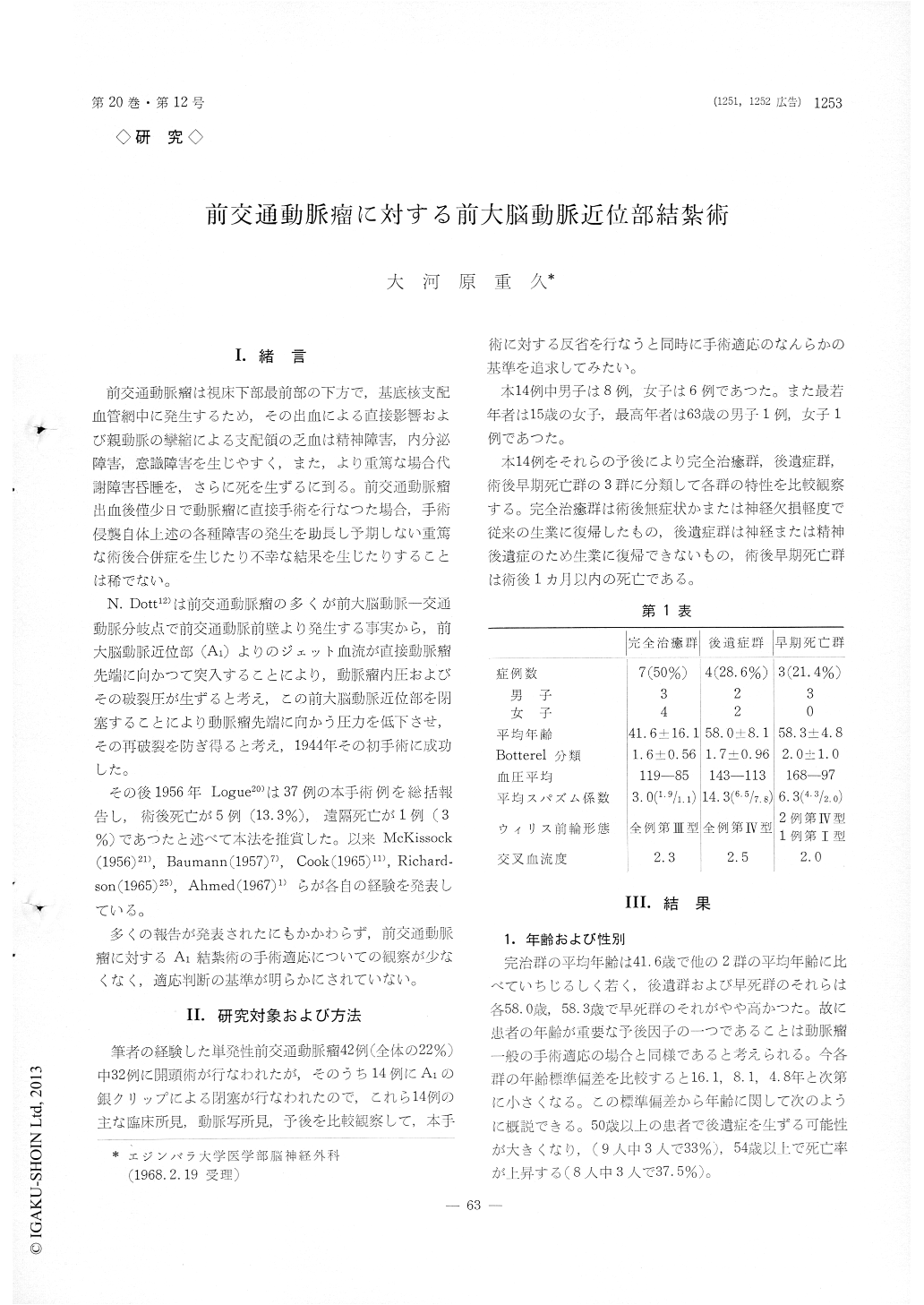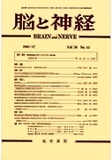Japanese
English
- 有料閲覧
- Abstract 文献概要
- 1ページ目 Look Inside
I.緒言
前交通動脈瘤は視床下部最前部の下方で,基底核支配血管網中に発生するため,その出血による直接影響および親動脈の攣縮による支配領の乏血は精神障害,内分泌障害,意識障害を生じやすく,また,より重篤な場合代謝障害昏睡を,さらに死を生ずるに到る。前交通動脈瘤出血後僅少日で動脈瘤に直接手術を行なった場合,手術侵襲自体上述の各種障害の発生を助長し予期しない重篤な術後合併症を生じたり不幸な結果を生じたりすることは稀でない。
N. Dott12)は前交通動脈瘤の多くが前大脳動脈—交通動脈分岐点で前交通動脈前壁より発生する事実から,前大脳動脈近位部(A1)よりのジェット血流が直接動脈瘤先端に向かって突入することにより,動脈瘤内圧およびその破裂圧が生ずると考え,この前大脳動脈近位部を閉塞することにより動脈瘤先端に向かう圧力を低下させ,その再破裂を防ぎ得ると考え,1944年その初手術に成功した。
Ligation of the proximal anterior cerebral artery as an operative treatment for anterior communicating aneurysm was commenced by Professor Norman Dott in 1944 and later advocated by the paper written by Logue in 1956. Notwithstanding numerous later reports relevant to this subject, its practical and selective indication for anterior communicating aneurysm has not been clarified well. The observa-tions in this paper are intended to contribute to establishment of its operative indication for the aneurysm.
A series of 14 cases of single anterior commu-nicating aneurysm, on which the proximal ligation of the anterior cerebral artery was performed for its operative treatment, is analysed ; being grouped into three prognostic categories for comparison of variables among them seven cases of complete recovery, four cases of disablement and three cases of postoperative death
(1) The morbidity increased for the cases older than 50 and the mortality did over 54 years of age.
(2) The third grade of Botterell's clinical classifi-cation indicated definitely more formidable prognosis, though no case in fourth and fifth grade was in this group.
(3) The group of postoperative disablement showed augmented average diastolic blood pressure, while the mortuary group showed both average systolic and diastolic pressures augmented.
(4) The group of disablement showed the highest average arterial spasm index demonstrated on angiography and then the mortuary group followed it and the group of complete recovery showed the minimal index.
(5) The best cross circulation demonstrated on angiography performed with the contralateral carotid artery compressed was observed in the mortuary group and the worst in the disable-ment group.
(6) The most important prognostic factor, that could be of great practical utility for judge-ment of the operative indication, was functional morphology of the anterior circle of Willis. In this paper the anterior circle of Willis is classified into five morphological types, depend-ing on angiographical features. One case of type I died, 7 of type III recovered completely, 4 out of 6 of type IV became disabled and 2 of them died postoperatively. It is, therefore, concluded from the forementioned operative results and the relevant discussion that type I and IV are not, but type III and V are good candidates for this method of operation.
In the part of discussion possible influential factors on the prognosis for each type of the anterior circle of Willis are discussed mainly in reference to arterial spasm and congenital anomalies. Also problems of unfortunate operative damage of the lateral anterior perforating arteries, hazardous progressive thrombosis especially in the left anterior cerebral artery and rebleeding are discussed in view of their roles in postoperative complications and their preventions. The importance of silver clip used for clipping of the artery is emphasized.

Copyright © 1968, Igaku-Shoin Ltd. All rights reserved.


